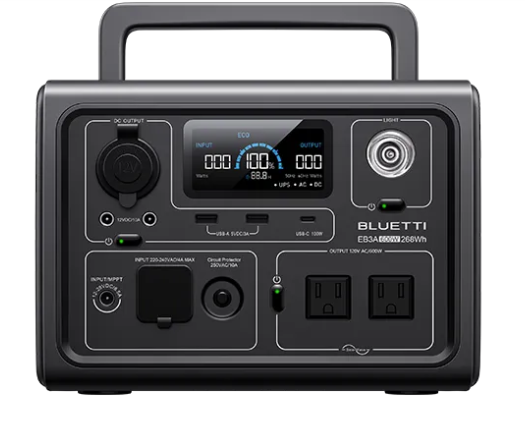As energy costs continue to rise and concerns about environmental impact grow, many homeowners are turning to solar power generators as a viable alternative to traditional energy sources. Solar generators harness the sun’s energy to provide electricity for homes, making them an increasingly popular choice for sustainable living. This guide will explore the benefits, components, and considerations of using a solar power generator for home use.
What is a Solar Power Generator?
A solar power generator is a system that converts sunlight into electricity. It typically consists of solar panels, an inverter, batteries, and other components that work together to store and supply energy. These generators can power a variety of household appliances and devices, depending on their capacity.
Benefits of Solar Power Generators
Renewable Energy Source
Solar power is a renewable energy source, meaning it won’t deplete over time. As long as the sun shines, you can generate electricity, which is essential for sustainable living.
Cost Savings
Once installed, solar generators can significantly reduce your electricity bills. Although there’s an upfront investment, many homeowners see a return on investment (ROI) through savings on energy costs over time. Additionally, some governments offer tax incentives and rebates for solar installations.
Low Maintenance
Solar power generators require minimal maintenance compared to traditional generators. Regular cleaning of the solar panels and periodic checks of the system are generally sufficient to keep them operating efficiently.
Energy Independence
By generating your own electricity, you become less reliant on utility companies. This independence can be especially beneficial during power outages or natural disasters, providing a reliable power source for your home.
Environmentally Friendly
Solar energy is clean and produces no greenhouse gas emissions, making it an environmentally friendly choice that contributes to reducing your carbon footprint.
Key Components of a Solar Power Generator
Solar Panels
Solar panels are the heart of the solar power generator. They convert sunlight into direct current (DC) electricity through photovoltaic cells. There are two main types of solar panels: monocrystalline and polycrystalline, with monocrystalline panels typically being more efficient and space-efficient.
Inverter
The inverter converts the DC electricity generated by the solar panels into alternating current (AC) electricity, which is the type of power used by most household appliances. Some systems may use a microinverter for each panel for increased efficiency.
Battery Storage
Batteries store excess electricity generated during sunny periods for use at night or during cloudy days. Lithium-ion batteries are commonly used for their long lifespan and efficiency.
Charge Controller
A charge controller regulates the voltage and current coming from the solar panels to prevent overcharging the batteries. This component is crucial for maintaining battery health and maximizing their lifespan.
Mounting System
The mounting system secures the solar panels to the roof or ground. Proper installation is vital to ensure optimal sun exposure and safety.
Choosing the Right Solar Power Generator for Your Home
Assess Your Energy Needs
Determine your household’s energy consumption by reviewing your utility bills. Identify which appliances and devices you want to power with the solar generator, as this will influence the size and capacity of the system you need.
Calculate the System Size
Once you know your energy needs, calculate the system size. This is often measured in watts or kilowatts. A solar professional can help you design a system that meets your requirements.
Consider the Space Available
Evaluate the space on your roof or property for solar panel installation. Ensure there is enough unobstructed sunlight exposure to maximize energy generation.
Explore Installation Options
Decide whether you want to install the system yourself or hire a professional. While DIY installation can save money, it requires a good understanding of electrical systems and local regulations.
Review Costs and Financing Options
Look into the total costs of the solar power generator, including panels, inverters, batteries, and installation. Explore financing options like loans, leases, or power purchase agreements (PPAs) to make the investment more manageable.
Installation and Maintenance Tips
Professional Installation
While some homeowners choose DIY installation, professional installation ensures compliance with local building codes and safety standards. It can also maximize the efficiency of your solar power system.
Regular Maintenance
To keep your solar power generator functioning optimally, perform regular maintenance. Clean the solar panels periodically to remove dirt and debris, and check the battery health and connections.
Monitor Performance
Use monitoring systems to track your solar generator’s performance. This allows you to identify issues quickly and ensure that your system operates efficiently.
Conclusion
Investing in a solar power generator for home can lead to significant long-term benefits, including cost savings, energy independence, and a smaller carbon footprint. By understanding the components, assessing your energy needs, and making informed decisions about installation and maintenance, you can harness the power of the sun to meet your electricity demands sustainably.




